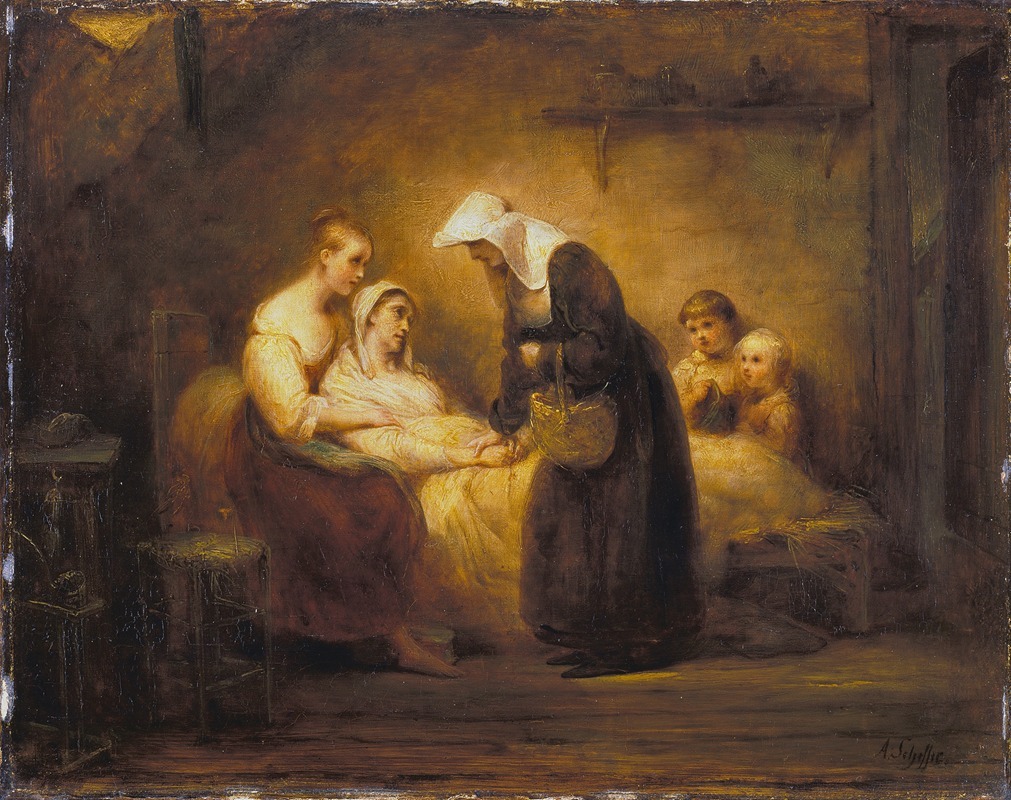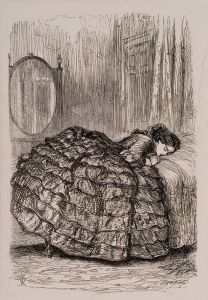
The Sister of Mercy
A hand-painted replica of Ary Scheffer’s masterpiece The Sister of Mercy, meticulously crafted by professional artists to capture the true essence of the original. Each piece is created with museum-quality canvas and rare mineral pigments, carefully painted by experienced artists with delicate brushstrokes and rich, layered colors to perfectly recreate the texture of the original artwork. Unlike machine-printed reproductions, this hand-painted version brings the painting to life, infused with the artist’s emotions and skill in every stroke. Whether for personal collection or home decoration, it instantly elevates the artistic atmosphere of any space.
"The Sister of Mercy" is a painting by the Dutch-French artist Ary Scheffer, created in 1854. Scheffer, born in 1795 in Dordrecht, Netherlands, was a prominent Romantic painter who spent much of his career in France. He is known for his emotionally charged and often religious-themed works.
This particular painting, "The Sister of Mercy," depicts a nun, symbolizing compassion and care, attending to a wounded soldier. The scene is set against a dark, somber background, which serves to highlight the central figures and the emotional gravity of the moment. The nun is shown in traditional habit, her face serene and focused, embodying the virtues of mercy and selflessness. The wounded soldier, lying on a makeshift bed, appears vulnerable and in need of care, emphasizing the theme of human suffering and the redemptive power of compassion.
Scheffer's use of light and shadow in this painting is notable. The light falls softly on the nun and the soldier, creating a halo effect around the nun's head, which further emphasizes her role as a figure of mercy and divine compassion. The rest of the painting is shrouded in darkness, which not only draws the viewer's attention to the central figures but also creates a dramatic contrast that heightens the emotional impact of the scene.
The painting reflects the Romantic era's preoccupation with intense emotion and the sublime. Scheffer's work often explored themes of love, sacrifice, and redemption, and "The Sister of Mercy" is a poignant example of these themes. The painting also reflects the 19th-century interest in religious and moral subjects, which were intended to inspire and uplift the viewer.
Ary Scheffer was a well-respected artist in his time, and his works were highly regarded by both critics and the public. He was closely associated with the French Romantic movement and was a friend of many prominent literary and artistic figures of the time, including Victor Hugo and George Sand. Scheffer's paintings were exhibited in the Paris Salon, and he received numerous accolades throughout his career.
"The Sister of Mercy" is housed in the Louvre Museum in Paris, where it continues to be admired by visitors for its emotional depth and technical mastery. The painting is a testament to Scheffer's skill as an artist and his ability to convey profound human emotions through his work.
In summary, "The Sister of Mercy" by Ary Scheffer is a significant work of art from the Romantic period, notable for its depiction of compassion and care in the face of human suffering. The painting's use of light and shadow, its emotional intensity, and its moral themes make it a powerful example of Scheffer's artistic vision and his contribution to 19th-century art.

















